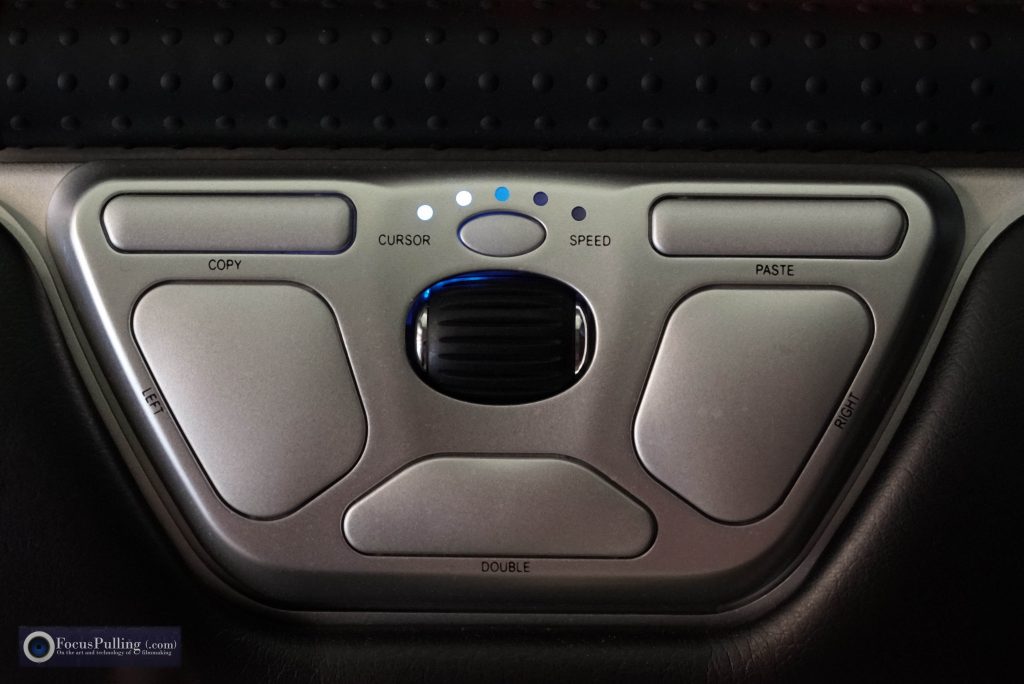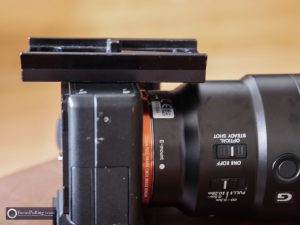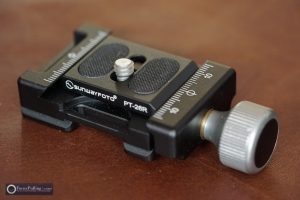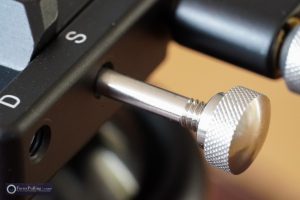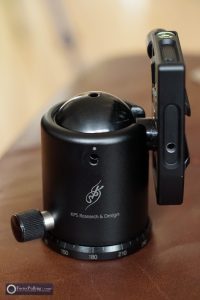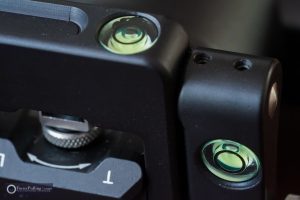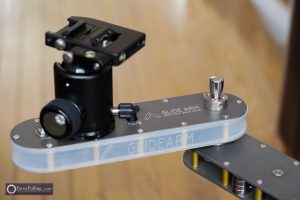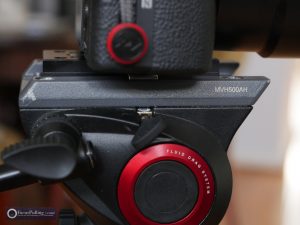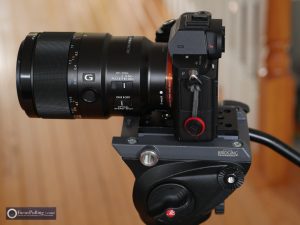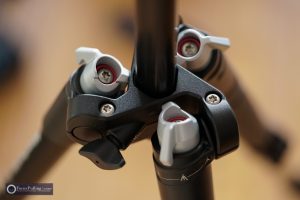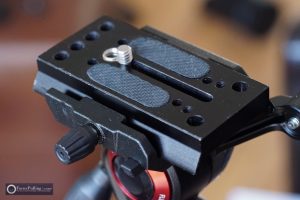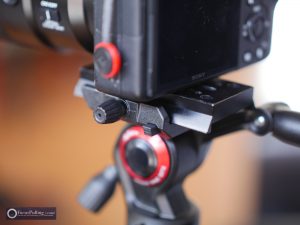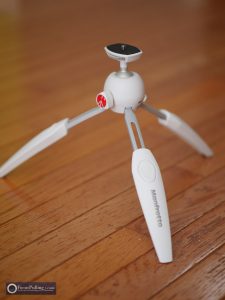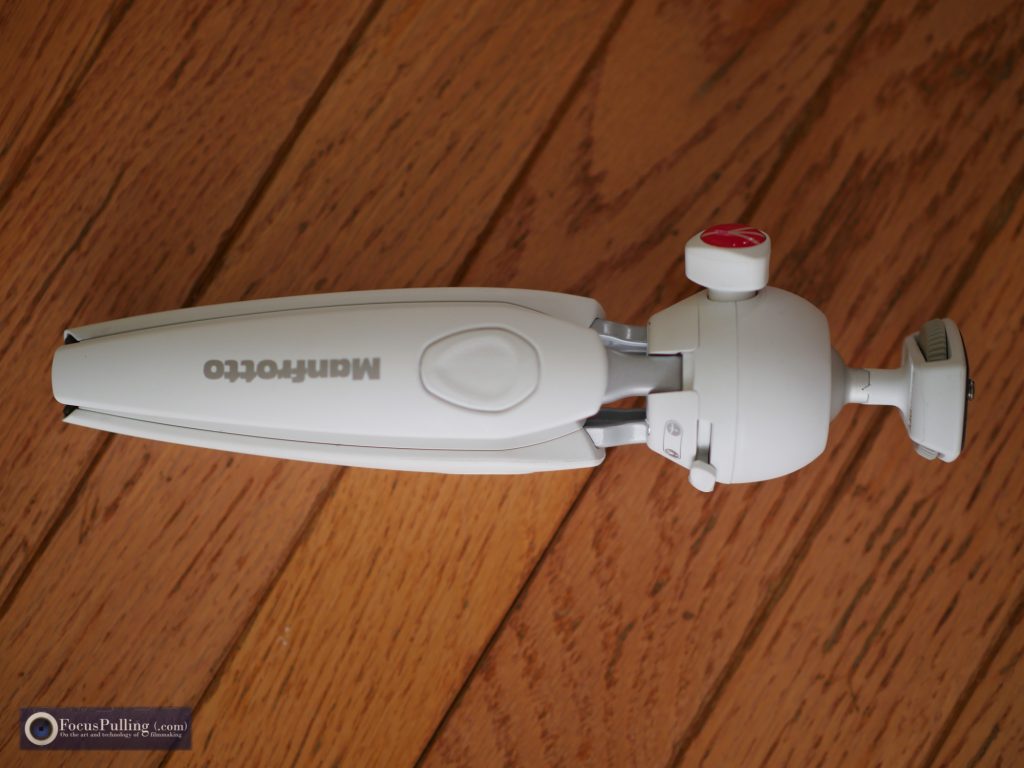Independent filmmakers often neglect to remember that our vast majority of time isn’t spent on set, behind cameras, and working with people. Instead, we’re sitting in front of computers for the longest stretches of time: video editing, marketing/promotion, correspondence, and tons more. If there’s anything to make that experience less painful and more productive, it may actually amount to an investment in creative filmmaking.

For video editing, the most important hardware control you can add to Premiere, Avid, Final Cut, Vegas, DaVinci, etc. is a shuttle dial with customizable buttons. The best and most affordable on the market are from Contour Design, and I reviewed their ShuttlePRO v2 here a few months ago, now pictured above paired with their innovative mouse alternative called RollerMouse.
The creators of this product, Contour Design, are offering readers here an exclusive 20% discount off any purchase from their webstore using coupon code FP20 at: www.contourdesign.com/store
It’s not just about medical ergonomics, but speed and productivity too: we ought to move our hands around as little as possible. When you think of any workstation, the default posture/hand position is this: keyboard at the middle; mouse to the right; our left and right hands on the keyboard; and if you’ve got a shuttle dial, it’s over to the left. RollerMouse begins with the idea that maybe you can keep your hands at the keyboard, without needing to move over to the mouse.
Does it work? Depends! Like anything in life, you can’t go wrong having more options, tailored to the task. After giving RollerMouse an earnest try over the past few months, for me, it’s a work-in-progress.
 Let’s start with the nuts and bolts: you’ll see in the picture at left how there’s a horizontal bar positioned just above the pleather wrist rest of the RollerMouse. When you move that grippy rubber sleeve on the bar left and right, it moves your pointer left and right; and when you rotate it up or down (sort of like a gigantic, clickless scroll wheel on a mouse), it moves your pointer up and down. When you tap down on the whole bar, you get a left-click. It all feels really weird at first.
Let’s start with the nuts and bolts: you’ll see in the picture at left how there’s a horizontal bar positioned just above the pleather wrist rest of the RollerMouse. When you move that grippy rubber sleeve on the bar left and right, it moves your pointer left and right; and when you rotate it up or down (sort of like a gigantic, clickless scroll wheel on a mouse), it moves your pointer up and down. When you tap down on the whole bar, you get a left-click. It all feels really weird at first.
Before exploring the rest, let’s get real: this is a wrist rest on steroids. But that feature can’t be overlooked. As an aside, one pet peeve of mine (and bewilderment at the accessories market) is how there are almost no good keyboard wrist rests. About a decade ago, Microsoft was really nailing it with their Comfort line of keyboards that had integrated wrist pads, with just the right balance between cushiony pleather texture, and rigid support. Today, we either get firm plastic pads (e.g., the one that came with my pictured Corsair K70), or smushy memory gel accessories to slip under our keyboards. But when this RollerMouse arrived, my years-long quest ended. This is the mother of all keyboard wrist rests, striking just the right balance.
Below the RollerMouse bar is an array of buttons that go beyond the usual left-click/right-click paradigm of a mouse. Although the big left button does perform a left-click, and the big right button a right-click, the middle one sends a double-click with one tap. And the two slim ones above these big ones: they copy and paste in one click. I think the idea here is, since your fingers won’t be perfectly positioned to hit them up, as they would be at a dedicated mouse, this is a necessary compromise to add buttons that require less strain. It’s all factored into the benefit that you’ll be able to keep your hands at the keyboard, away from the mouse…but not always.
The truth is, I’m still stuck in my old ways and struggling to find middle ground. We start from a good place, though: besides the financial investment, you’d have nothing to lose by having it there: to my surprise, I’ve never once gotten any accidental cursor movement or pointer click during normal keyboard usage because of the RollerMouse — and it operates simultaneously with your mouse. You won’t be getting rid of your mouse. There are some things you can do better and more precisely that old(ish) fashioned way. There is definitely something more tactile about pushing down on a mouse button, with force, and dragging something into a precise spot applying pressure (and relative movement). This capability isn’t lacking on the RollerMouse, it’s just less of a thing. So, taking one Adobe Premiere task as an example, I’ll prefer a mouse if I’m dragging the handles on an image resizing operation, to get the precise alignment inside a video frame where one bleeding pixel can ruin a shot. But, to quickly move my cursor to another panel where I know I’ll be using my keyboard next, I’m better off keeping my hands at the keyboard and using the RollerMouse.
Ever heard of the Kuleshov Effect? I was teaching it to my film school students a couple of weeks ago, as an editing principle from early film theory: that the meaning of something changes based on what you see before it, and after it. And I really think of the RollerMouse that way: if you’ve got a pointer operation consecutive with using the keys on your keyboard, you’re probably better off using the RollerMouse. But if you’ve got lots of pointer-focused clicking to do in sequence, and with precision, that trip over to your mouse is worth it.
 Even so, the RollerMouse gives you a few extra features to get you closer to mouse simulation. In the close-up picture at right, you’ll see how the cursor speed (“sensitivity”) can be adjusted in five steps. So, if you want to keep at your RollerMouse but perform that precise movement I was writing about earlier, this helps. In fact, it’s actually found on some mice, too: my Corsair Raptor M45 has it, too, with three levels of sensitivity that can be moved up or down using a toggle just under the scroll wheel.
Even so, the RollerMouse gives you a few extra features to get you closer to mouse simulation. In the close-up picture at right, you’ll see how the cursor speed (“sensitivity”) can be adjusted in five steps. So, if you want to keep at your RollerMouse but perform that precise movement I was writing about earlier, this helps. In fact, it’s actually found on some mice, too: my Corsair Raptor M45 has it, too, with three levels of sensitivity that can be moved up or down using a toggle just under the scroll wheel.
Speaking of scroll wheels, the RollerMouse has that also, pictured at right. Notably, it doesn’t have a notched travel to it, like most mice, but it doesn’t freely fly either. I might have preferred that mouse norm of clunking up and down in clear bumps, but then again, now I have a choice between the two types of scroll action, between the RollerMouse and mouse.
The truth is, video editors aren’t the primary market for Contour Design when it comes to this RollerMouse, even though they own the market for jog shuttles. Naturally, word processing benefits the most from keeping hands nearest the keys. And those rainbow-colored keyboards for Avid editors of yore simply aren’t a ubiquitous reality anymore: we’ve moved on from that, and video editing today is fundamentally a mouse-based practice. Sorry, Walter Murch.
In a perfect world, there would be a background task (like the Contour Shuttle Device Configuration tool tray item) letting us customize the RollerMouse within Premiere, for example: since I’m constantly scrolling left and right on my timeline, it would be killer to have a mode on the RollerMouse where the bar’s horizontally-focused action only controls the timeline/time marker location, and the matrix of five buttons also could map to Premiere shortcuts.
 But just as it is, the RollerMouse doesn’t require configuration or drivers: you hook it up via USB, and you’re ready to roll. It’s solidly constructed, with a metal base as seen at left, grippy feet, and great customer support. The killer question for you is its value for the dollar: at pricing that ranges from $200 to almost $300, it’s a big investment if you’re not sure. Contour Design does have a generous try-out policy, while another thing to consider will take us back to the start of this review: if we spend the majority of our time, even as artists, sitting in front of a computer, even this small impact on ergonomics and productivity can add a priceless benefit over the long term. I’m sold.
But just as it is, the RollerMouse doesn’t require configuration or drivers: you hook it up via USB, and you’re ready to roll. It’s solidly constructed, with a metal base as seen at left, grippy feet, and great customer support. The killer question for you is its value for the dollar: at pricing that ranges from $200 to almost $300, it’s a big investment if you’re not sure. Contour Design does have a generous try-out policy, while another thing to consider will take us back to the start of this review: if we spend the majority of our time, even as artists, sitting in front of a computer, even this small impact on ergonomics and productivity can add a priceless benefit over the long term. I’m sold.
Keep an eye out next for their brand new product that brings everything full-circle, the Unimouse. I’ll try it and test here soon.

